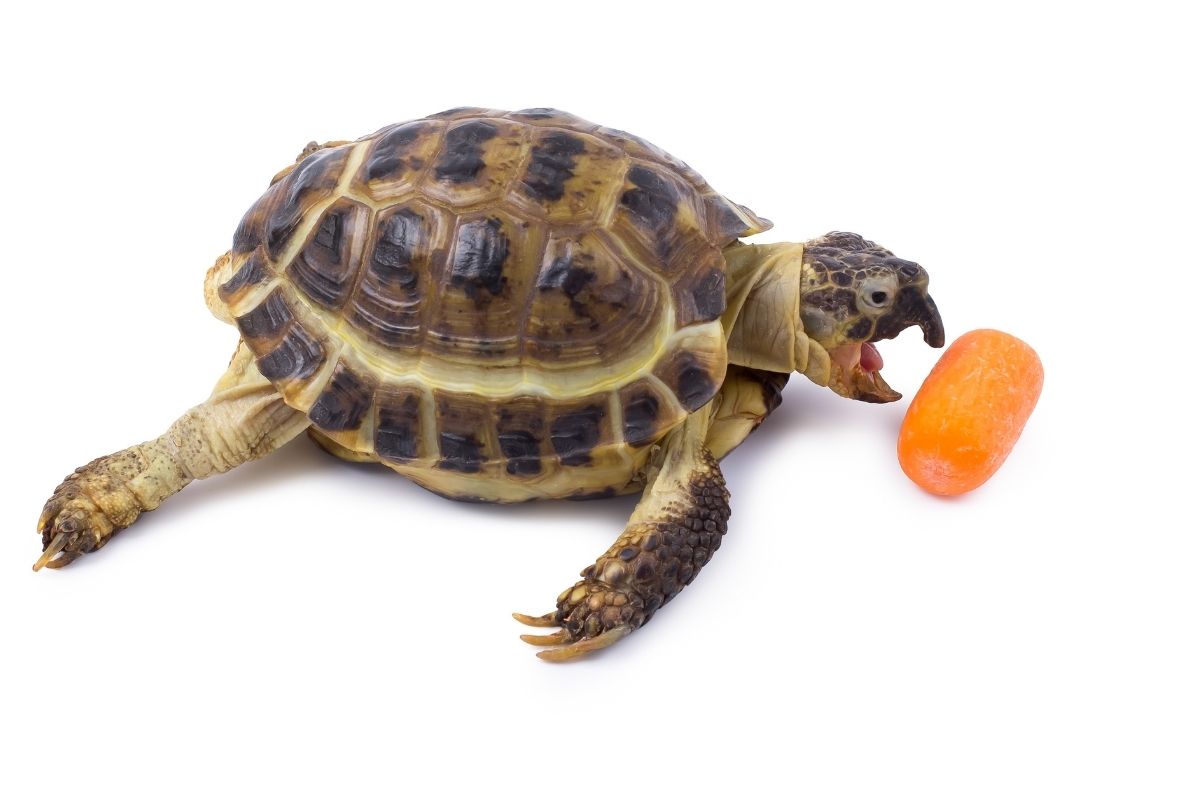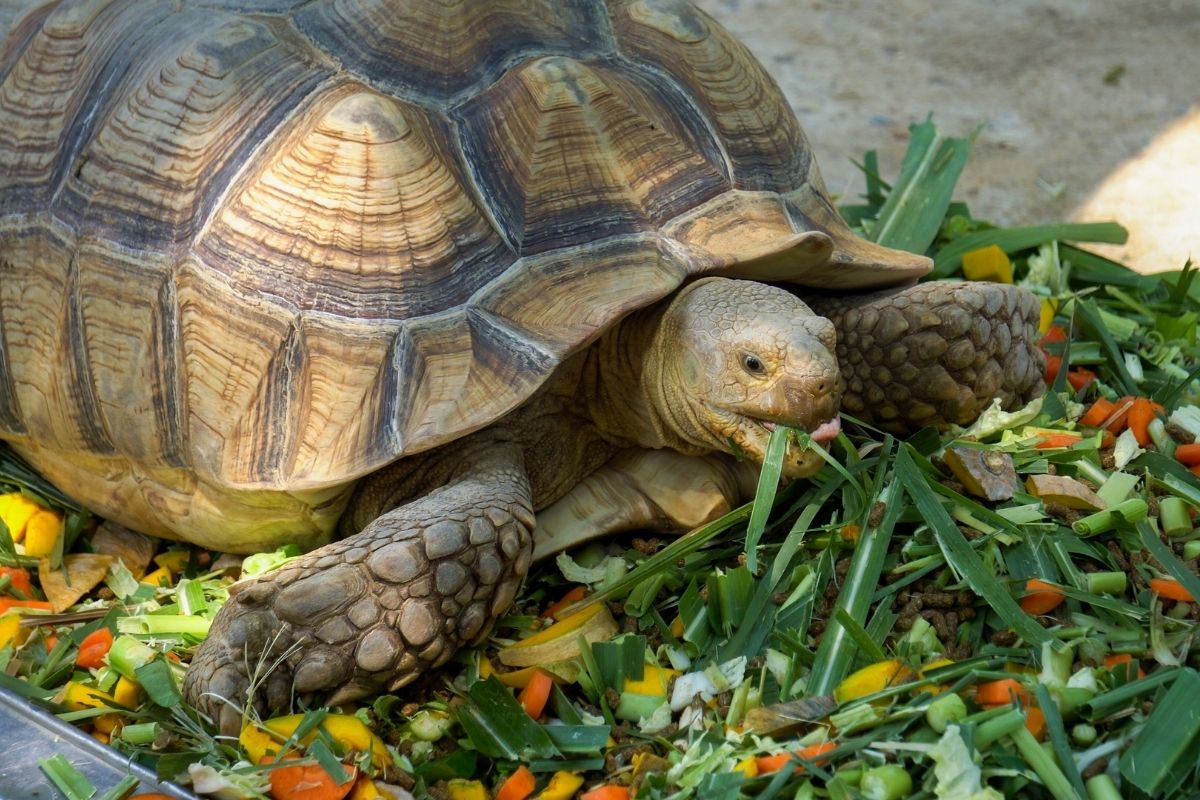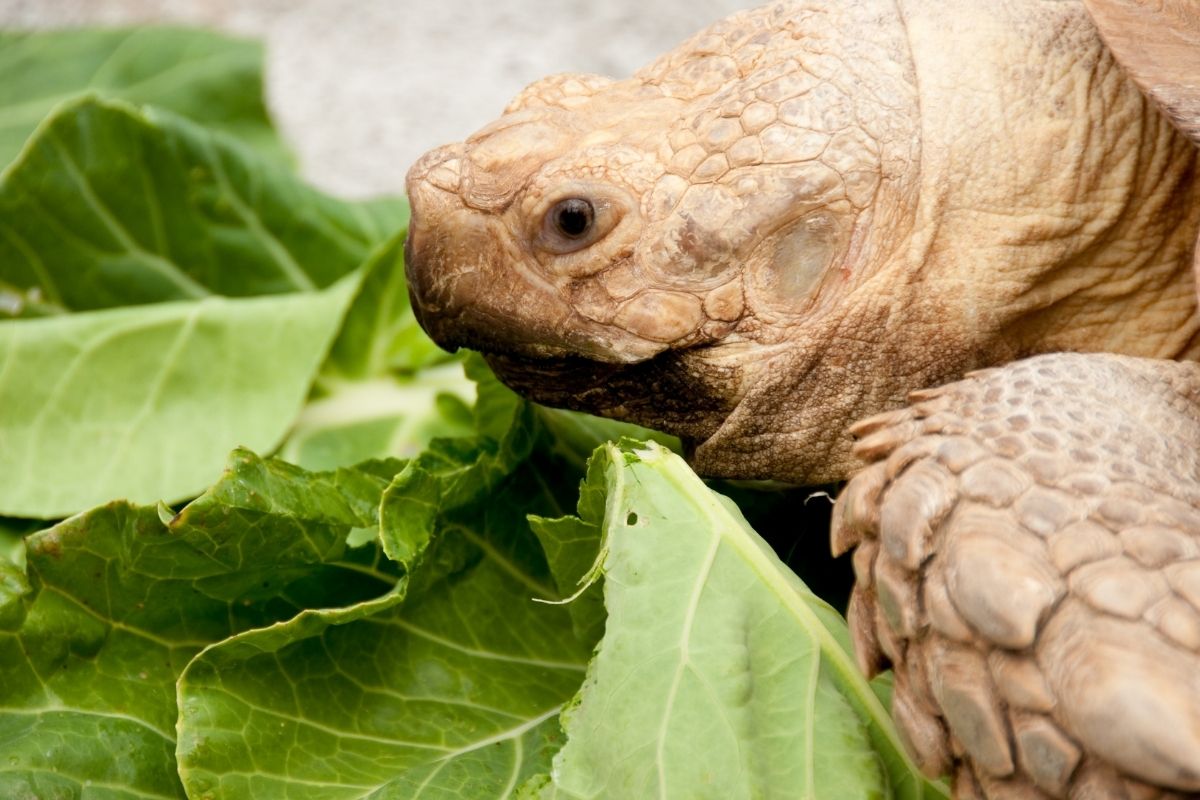Reptiles are one of the most popular types of exotic pets out there. Dozens of different species, from bearded dragons to corn snakes, to iguanas, to monitor lizards, are kept as scaly companions across the world.

And one of the most popular types of reptiles that are often kept as a pet is the humble little turtle.
More specifically, the family of reptiles that includes turtles, and their cousins, the terrapins and tortoises.
Like any exotic pet, many new owners of these little critters run into issues when trying to meet the needs of these little animals.
They are so unlike the usual pets that people normally own such as dogs, cats, rats, rabbits, and hamsters, that it can often take a while to calibrate what they need.
For example, do they need some type of dedicated feed, or can they eat things such as chips, imitation crab meat, or even vegetables, such as carrots?
In this article, we are going to cover what foods make up the diets of this group of animals, as well as tell you what is safe for your reptilian friend to eat, including carrots.
We also touched upon the best way to keep them happy and healthy with their diet.
So let’s get started!
Tip: Check our full guide “What Do Turtles Eat?”
Turtle, Terrapin, And Tortoise Diets
Before we establish what is and isn’t safe for your shelled friend to eat, it is worth considering what exactly these animals eat in their natural environment first, as that will help demonstrate the types of things they can usually be fed.
Turtles
Turtles across the world, like many of us, love the taste of seafood. Fish, crustaceans, mollusks, and many other water-born animals will make up a massive part of their diet.
Some species of turtle live in saltwater environments, which means they can eat ocean creatures, but most prefer freshwater sources.
Some will even try to ambush small mammals that find themselves in or near water, especially species such as the snapping turtle, which have evolved to lay in wait for food to pass by them, before catching them in their powerful jaws in an instant, hence the name ‘snapping turtle’.
Most turtle species are not just meat-eaters, however. Omnivorous species are very common too, especially in species that are usually sold as exotic pets.
One of the most famous examples of this is the Spiny softshell turtle, which has been known to eat almost anything – fruit, insects, plants, shellfish, fish, frogs, mice, and even fruit and vegetables.
Tortoises
Many people are often confused about the distinction between tortoises and turtles.
The biggest difference is, with a few exceptions, turtles are primarily aquatic animals, whilst most, if not all, tortoises live out of the water.
Like their aquatic cousins, they will eat almost everything they can get their claws on.
They share a lot of similarities with lizards in terms of their dietary habits, although they tend to be less active and have longer digestive systems.
This makes them slower moving, but also puts them in a better position to digest the larger items they eat.
They are omnivores, meaning they are capable of consuming both plant matter and animal material, although they will mainly choose the former in most cases. Depending on their species, they might eat a similar variety of foods as turtles.
Terrapins
Terrapins are a type of aquatic turtle, although there is no scientific consensus on what separates terrapins from either tortoises or turtles.
As such, reptiles from both groups will often be labeled as terrapins. They are found across North America, Europe, Africa, Asia, Australia, South America, and New Zealand.
The majority of terrapin breeds are raised commercially, although some species are more commonly kept as pets.
Like turtles, terrapins are omnivores, eating a wide range of foods depending on what they are offered.
However, like turtles, they can consume large amounts of vegetation because of their long digestive tracts.
Unlike tortoises, they spend most of their time in freshwater, although some species will venture into saltwater.
Although they’re not all that picky about their diet, they do tend to rely quite heavily on vegetation for nutrition. The majority of their diet consists of algae, aquatic grasses, roots, and tubers.
Can Turtles, Tortoises, And Terrapins Eat Carrots?

Now that you know what they typically feed on, you can see why carrots would be a good choice for feeding your pet. There are several reasons why they are one of the best choices available.
Firstly, they are high in Vitamin A and C, making them a great source of antioxidants.
Secondly, they are low in calories, making them easy to digest without worrying about overfeeding your turtle.
Thirdly, they are rich in fiber, which helps keep the gastrointestinal tract functioning properly.
Finally, they are relatively inexpensive, so you don’t need to worry about your pet eating you out of house and home.
Although they do contain some nutrients, carrot isn’t considered an essential part of the reptile diet. For example, they won’t necessarily require vitamins B12 or D.
However, they will benefit greatly from calcium, iron, zinc, and magnesium. They may also benefit from vitamin K and copper.
If you decide to give your pet carrots, make sure you wash them well before serving them up. This will remove any dirt and bacteria that could contaminate their food.
Also, make sure you use only fresh carrots, as old ones will have lost much of their nutritional value.
Don’t forget to cut them up too. The easiest way to do this is by using a vegetable peeler and knife.
Alternatively, if you want to buy ready-cut carrots, look for bags labeled ‘raw’.
Other Types Of Vegetables And Fruits That Tortoises, Terrapins And Tortoises Can Eat
There are so many vegetables out there that it is impossible to list every single one that can be fed to reptiles.

Some of the most common include:
Lettuce
Like lettuce, other types of leaves and greens are also suitable for reptiles. These include spinach, kale, collard greens, mustard greens, and turnip greens.
Just remember to always rinse these kinds of vegetables thoroughly first to remove any dirt or other impurities that might be present.
Green Beans
While they aren’t generally recommended as a staple part of the reptile’s diet, green beans are still a healthy addition. They are particularly high in potassium.
Green beans are also low in sodium, a nutrient that should be restricted in diets for all reptiles. If you want to provide them with green beans, make sure you thoroughly rinse them first.
Cucumber
Cucumbers are another excellent option for reptiles. They are full of minerals like phosphorus, potassium, magnesium, manganese, and calcium.
They are also very low in fat and calories, making them easy for reptiles to digest and metabolize. They are even easier than carrots. Simply slice them thinly and add them directly to the tank.
This should be a once-every-so-often treat, though, as too much phosphorus can be bad for these animals.
Tomatoes
Tomatoes are usually used in cooking dishes for humans. But did you know that they can also be added to the diets of reptiles?
Although not necessarily something they would eat in the wild, tomatoes are quite nutritious.
They contain lots of different vitamins and minerals, including folic acid, potassium, phosphorus, and magnesium.
They are also low in calories and fat. So while you shouldn’t offer your pet tomatoes regularly, they can certainly be included in the diet once in a while.
Bananas
Bananas are safe for reptiles to eat. Bananas are packed with potassium, calcium, fiber, and vitamins A and C. As such, they are a great source of nutrition.
You can feed bananas to your pets without worrying about contaminating them.
Because they are relatively high in potassium, they help prevent water retention. Additionally, the fiber content helps keep your pets regular.
Apples
Apples are a fruit that is commonly given to turtles. It is high in vitamin C, which helps promote good health.
Because they are high in antioxidants, apples are safe for reptiles to consume. However, they shouldn’t be offered daily. Instead, they should be included occasionally, as a delicious treat.
Conclusion
As you can see, there are many options available when it comes to feeding reptiles. Many of them have been listed above.
The best thing you can do is talk to your veterinarian before adding new foods to your pet’s diet. This way, you will have more information on which to base your decisions.
But at the very least, you’ll leave this list knowing that carrots should be a perfectly fine snack to feed your shy shelled friend!
